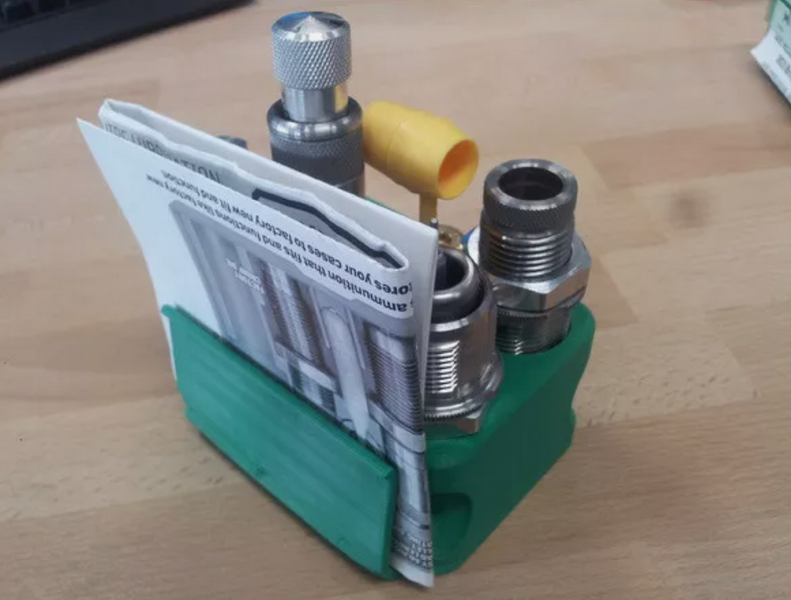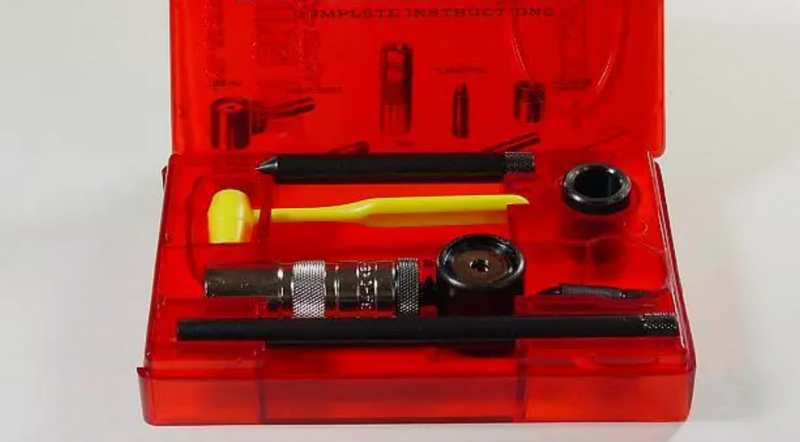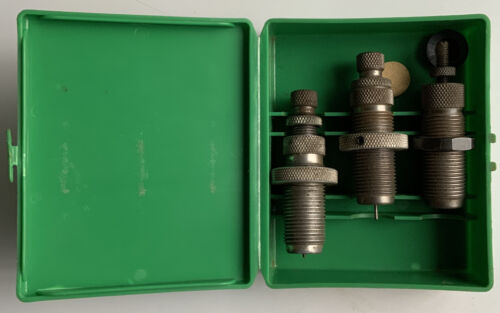Content Menu
● Introduction
● Understanding Reloading Dies
● Features of Hornady Carbide Reloading Dies
>> Material Advantages
>> Design and Craftsmanship
>> Comparison with Other Materials
● Benefits of Using Hornady Carbide Reloading Dies
>> No Need for Case Lubrication
>> Enhanced Durability and Longevity
>> Improved Accuracy and Consistency
● Setting Up Your Reloading Press with Hornady Dies
>> Step-by-Step Guide to Setting Up the Press
>> Tips for Maintaining and Cleaning the Dies
>> Common Mistakes to Avoid During Setup
● Reloading Techniques with Hornady Carbide Dies
>> Best Practices for Reloading with Carbide Dies
>> Troubleshooting Common Issues
>> Advanced Techniques for Experienced Reloaders
● Conclusion
● Related Questions
>> Q1. What are the advantages of using carbide reloading dies over steel dies?
>> Q2. How do I maintain my Hornady carbide dies?
>> Q3. Can I use Hornady carbide dies for all types of ammunition?
>> Q4. What should I do if a case gets stuck in the die?
>> Q5. How can I improve my reloading accuracy?
Introduction
Reloading ammunition is a vital skill for many shooting enthusiasts, allowing them to customize their loads for precision, performance, and cost-effectiveness. Among the various tools available for reloading, Hornady carbide reloading dies stand out for their quality and efficiency. Hornady, a renowned name in the ammunition industry, has developed a range of carbide dies that cater to both novice and experienced reloaders. This article aims to explore the features, benefits, and techniques associated with Hornady carbide reloading dies, providing a comprehensive guide for anyone interested in enhancing their reloading experience.
Understanding Reloading Dies
Reloading dies are essential tools in the ammunition reloading process. They are used to shape and size the brass cases, ensuring that they fit properly in the firearm chamber. There are several types of reloading dies, including full-length sizing dies, neck sizing dies, and carbide dies. Each type serves a specific purpose, and understanding these differences is crucial for selecting the right die for your needs.
Full-length sizing dies resize the entire case, making them suitable for any chamber. Neck sizing dies, on the other hand, only resize the neck of the case, which can help maintain the accuracy of fire-formed cases. Carbide dies, like those offered by Hornady, are made from a hard, durable material that allows for smoother resizing without the need for lubrication.

Features of Hornady Carbide Reloading Dies
Hornady carbide reloading dies are designed with several key features that set them apart from other options on the market.
Material Advantages
The primary advantage of carbide dies is the material itself. Carbide is significantly harder than steel, which means it can withstand more wear and tear. This durability translates to a longer lifespan for the dies, making them a worthwhile investment for serious reloaders. Additionally, carbide dies do not require case lubrication, which simplifies the reloading process and reduces the time spent on preparation.
Design and Craftsmanship
Hornady is known for its precision engineering, and their carbide dies are no exception. Each die is manufactured to exacting standards, ensuring consistent performance and reliability. The dies feature a smooth finish that minimizes friction during the resizing process, resulting in less effort required to operate the press.
Comparison with Other Materials
While steel dies are common in the reloading community, they often require lubrication to function properly. This can be a cumbersome step for many reloaders. In contrast, Hornady carbide dies eliminate this need, making them more user-friendly. Additionally, carbide dies tend to produce more consistent results, which is crucial for achieving tight groupings on the range.
Benefits of Using Hornady Carbide Reloading Dies
The benefits of using Hornady carbide reloading dies extend beyond just material advantages.
No Need for Case Lubrication
One of the most significant benefits of carbide dies is the elimination of case lubrication. This not only saves time but also reduces the mess associated with reloading. Reloaders can quickly resize cases without the extra step of applying lubricant, making the process more efficient.
Enhanced Durability and Longevity
Hornady carbide dies are built to last. The hardness of carbide means that these dies can withstand repeated use without significant wear. This durability ensures that reloaders can rely on their dies for many years, making them a cost-effective choice in the long run.
Improved Accuracy and Consistency
Accuracy is paramount in shooting sports, and Hornady carbide dies contribute to this goal. The precision engineering of these dies ensures that cases are resized uniformly, which leads to more consistent ammunition. This consistency is crucial for achieving tight groupings and reliable performance in the field.
Setting Up Your Reloading Press with Hornady Dies
Setting up your reloading press with Hornady carbide dies is a straightforward process, but attention to detail is essential for optimal results.
Step-by-Step Guide to Setting Up the Press
1. Gather Your Equipment: Ensure you have all necessary tools, including your Hornady carbide dies, a reloading press, shell holder, and brass cases.
2. Install the Die: Start by screwing the carbide die into the press. Make sure it is securely tightened but avoid over-tightening, which can damage the die.
3. Adjust the Die Height: Lower the ram of the press and adjust the die until it makes contact with the shell holder. Raise the ram to ensure the die is set correctly.
4. Test the Setup: Insert a brass case into the shell holder and run it through the die. Check for proper sizing and adjust as necessary.
5. Repeat for Other Dies: If using multiple dies (e.g., for seating or crimping), repeat the installation and adjustment process for each.
Tips for Maintaining and Cleaning the Dies
Proper maintenance of your Hornady carbide dies will ensure their longevity and performance. Here are some tips:
- Clean After Use: Wipe down the dies with a soft cloth after each use to remove any residue or debris.
- Store Properly: Keep the dies in their original packaging or a dedicated storage case to prevent damage.
- Inspect Regularly: Periodically check the dies for any signs of wear or damage, and address any issues promptly.
Common Mistakes to Avoid During Setup
- Over-tightening the Die: This can lead to damage and misalignment. Always tighten just enough to secure the die.
- Neglecting to Adjust the Die Height: Failing to set the die correctly can result in improperly sized cases.
- Skipping Cleaning: Not cleaning the dies can lead to buildup that affects performance.

Reloading Techniques with Hornady Carbide Dies
Once your Hornady carbide dies are set up, employing the right reloading techniques will enhance your results.
Best Practices for Reloading with Carbide Dies
- Use Quality Components: Start with high-quality brass and primers to ensure the best results.
- Follow Recommended Loads: Always refer to reliable reloading manuals for load data to avoid overcharging or undercharging.
- Monitor Case Length: Trim cases to the appropriate length to ensure consistent performance.
Troubleshooting Common Issues
Even with the best equipment, issues can arise during reloading. Here are some common problems and solutions:
- Stuck Cases: If a case gets stuck in the die, use a stuck case remover tool to extract it without damaging the die.
- Inconsistent Sizing: If cases are not sizing uniformly, double-check the die height and ensure it is properly adjusted.
- Bulging Cases: This can occur if the die is not set correctly. Reassess the setup and make necessary adjustments.
Advanced Techniques for Experienced Reloaders
For those looking to take their reloading to the next level, consider these advanced techniques:
- Batch Processing: Resize and de-prime all cases before moving on to the next step, such as trimming or priming.
- Using a Progressive Press: If you are reloading large quantities, consider using a progressive press to streamline the process.
- Experimenting with Different Loads: Test various powder types and bullet weights to find the optimal combination for your firearm.
Conclusion
Hornady carbide reloading dies are an excellent choice for anyone serious about reloading ammunition. Their durability, ease of use, and ability to produce consistent results make them a valuable addition to any reloader's toolkit. By understanding the features and benefits of these dies, as well as employing proper techniques, reloaders can enhance their shooting experience and achieve greater accuracy on the range.

Related Questions
Q1. What are the advantages of using carbide reloading dies over steel dies?
Carbide dies do not require lubrication, are more durable, and provide more consistent sizing, leading to improved accuracy.
Q2. How do I maintain my Hornady carbide dies?
Clean them after each use, store them properly, and inspect them regularly for wear or damage.
Q3. Can I use Hornady carbide dies for all types of ammunition?
Hornady carbide dies are suitable for many calibers, but always check the specific die's compatibility with your ammunition type.
Q4. What should I do if a case gets stuck in the die?
Use a stuck case remover tool to extract the case without damaging the die.
Q5. How can I improve my reloading accuracy?
Use high-quality components, follow recommended loads, and ensure your dies are set up correctly for consistent sizing.
















